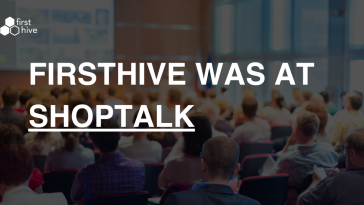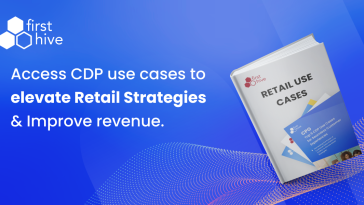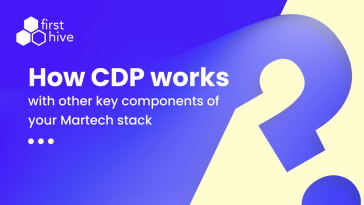Marketing Technology as a sector is growing at a break neck pace and gaining traction, even among traditional markets. With CMOs becoming big spenders on technology, the lines between the CMO and the CIO organisations is quickly becoming blurred w.r.t. who wields the decision-making ability regarding such spends. While we will see the CMOs and CIOs working closely to identify and deploy marketing solutions, the below list attempts to list a few important areas where MarTech spends are expected over the coming months.
Geofencing
Geofencing is essentially creating a geographic demarcation such that shoppers within a specific area receive special coupons or offers that can be redeemed at a retail outlet. This can thus be used for either driving walk ins to a store or persuade the customers to spend more in-store. E.g. Walmart’s app has a store mode that responds to geofencing around stores and delivers coupons and special offers intended to drive walk ins. Starbucks was also planning to launch an ‘order ahead’ service wherein customers can order while on the move in the vicinity of a store, and just come in to pick up their order. With the Internet of Things gaining traction as well, there are companies experimenting with smart devices that perform some action depending on your location trigger w.r.t. the device, e.g. your refrigerator ordering foodstuff when you are home and then sending a text reminder, to ensure you are available to take the delivery.
Beacons
In theory, some may argue that Beacons are a subset of geofencing solutions itself, wherein several large retailers like Macy’s, Starbucks, American Outfitters are setting up bluetooth based text communication with the shoppers who walk in the store, the reason it is called out separately is the increasing role of Beacons in the space of mobile and proximity payments. This opens up a whole new experience for the shoppers which transcends traditional commerce mechanisms. In addition, shoppers can also choose to tag certain products through a website or social page, and get a custom notification sent to them when they walk into a store. Beacons are also increasingly used in events for calling out the various streams and discussions underway across the venue.
Marketing Automation Tools
Marketing Automation is one of the simplest and potent marketing tools in your arsenal. Simply put, marketing automation is the automation of all repetitive tasks that make up your marketing and sales process. For example, wishing your customers on their anniversaries or birthdays, sending seasons’ greetings, or even cross-channel communication of updates based on certain preconfigured triggers. Traditionally used by SMEs with limited Capex spend appetite, or struggling with lack of IT resources to configure specific database triggers for the business, marketing automation is increasingly penetrating even traditional, non-digital savvy sectors While there exist many marketing automation tools in the market, marketers are looking for platforms that enable cross-channel automation based on either preset triggers, or responses on a campaign sent through a particular channel.
Multi Channel engagement tools
Your customer today does not interact with you on a single channel alone. 81% of shoppers search online before making a buying decision. A vast majority ask for the opinions of their friends or family. Many customers also prefer making multiple visits to the store before they finally make a buying decision, more so for a high involvement category or expensive product. As a brand, you would also have laid out multiple other touch points which can be used by your customer to interact with you. White data (like white noise) that gets generated across all the channels and touchpoint can be leverage for some interesting behavioural insights if captured and analysed, else learnings are lost forever. Marketers need to invest in customer engagement platform which is capable of multi-channel engagement while providing actionable insights.
Social Listening
In the time it takes you to read this post, tens of millions of shoppers across the globe would be talking about brands and products across social media. As a channel, social is perhaps the most potent in terms of ‘propensity to engage’, as well as one which provides real-time feedback. Recognising the power of the medium, shoppers also tend to place their trust in brands which are active across social channels like Facebook, LinkedIn, Twitter, Pinterest, among others, since it offers them a non-obtrusive communication channel, unlike the traditional customer support channels that they are exposed to. This becomes all the more important for B2C companies who deal with a large number of shoppers, who demand personal attention and acknowledgement. It helps if you have the tools to measure the sentiment of a conversation while responding, to ensure that you are able to give your brand a human face. Social listening is also a great source for you to gauge your competition and gain insights that can prove invaluable for your brand to win that elusive incremental market share.
CRM and opportunity management tools
In most B2B companies, 80% – 85% of leads are never converted to sales. A major reason for the low conversions is typically unstructured follow-up, in the absence of a structured toolset to qualify marketing leads. Marketing and Sales automation increase the lead throughput, increase the quality of leads in the funnel, improve sales effective and productivity while providing a clear, unambiguous view of the funnel health.
Single Window view of the customer
While customers today interact with you across various channels, their personas are different across the channels. It is pertinent for your brand to initiate and maintain a meaningful dialogue across channels to be able to map the said personas and conversations across channels to a unique shopper. If I have been a consumer of your brand for the last couple of years, would your messaging to me still be “Hey, I am a great product”, or would it rather be a “Welcome back”. Most brands, however, are still struggling to create this single view of the customer that maps all his interactions and transactions with the brand, across multiple touchpoints.
Virtual Reality
Marketers are also increasingly looking at Virtual Reality to instigate customers to engage with their brand. By definition, these experiences need to be realistic so as to provide the customer with a glimpse into what he is missing. This typically works great for any experiential category like travel, real estate, etc. Mariott, in fact, rolled out a ‘Travel brilliantly’ campaign that gave its prospects a virtual version of travel to London and Hawaii. This obviously inspired travellers to book their travel to such locations, while also helping the brand connect with young, tech-savvy consumers. Red Bull offers immersive VY experience for its audiences by allowing the audiences at its extreme flying races, enabling fans to experience being on the plane, and not just watch it fly by. Brands are also looking at virtual reality platforms to set up inexpensive test layouts of new retail outlets and observing customer browsing patterns trough such platforms.
Wearable Tech
Wearables allow a hyper personalised marketing approach towards your customers and evolved marketers are busy experimenting their plans on this platform. A major advantage of wearables will be the new chunk of data that is released from this platform, and how a marketer can best leverage the same. However, this data flow will need to be 2 way for creating a meaningful experience. A prime example would be the Nike ‘Our Year’ campaign wherein Nike created personalised animated films for users showcasing their athletic prowess over the year, and challenging them to outdo themselves the next year. Data privacy concerns may still play spoilsport here but with space still evolving, some marketers are hoping to gain the early mover advantage on this platform.
Analytics
What cannot be measured, cannot be improved – Peter Drucker
With a multitude of data sources permeating the value chain, the customer today generates white data across touchpoint, which marketers are trying to capture in order to gauge insights. However, while tools like Google Analytics and MixPanel can give you your web analytics, it is for the marketer to effectively evaluate the business metrics like ROI, channel performance, engagement, and propensity to buy or respond, using these or similar tools.
With a clear distinction drawn between marketing analytics and web analytics here, the smart marketer is aware of the key drivers and triggers of his business, and is increasingly investing in new tools to help him measure, track, and optimise the same.









One Comment
Leave a ReplyHello,
Nice article. Making strategies according to the latest technology trend has become the most important part of business. Like all the useful points you mentioned in the post. Single window view of customers is a must in making marketing strategies more targeted and effective and to manage single customer view single sign-on plays a vital role. What are your views on this?